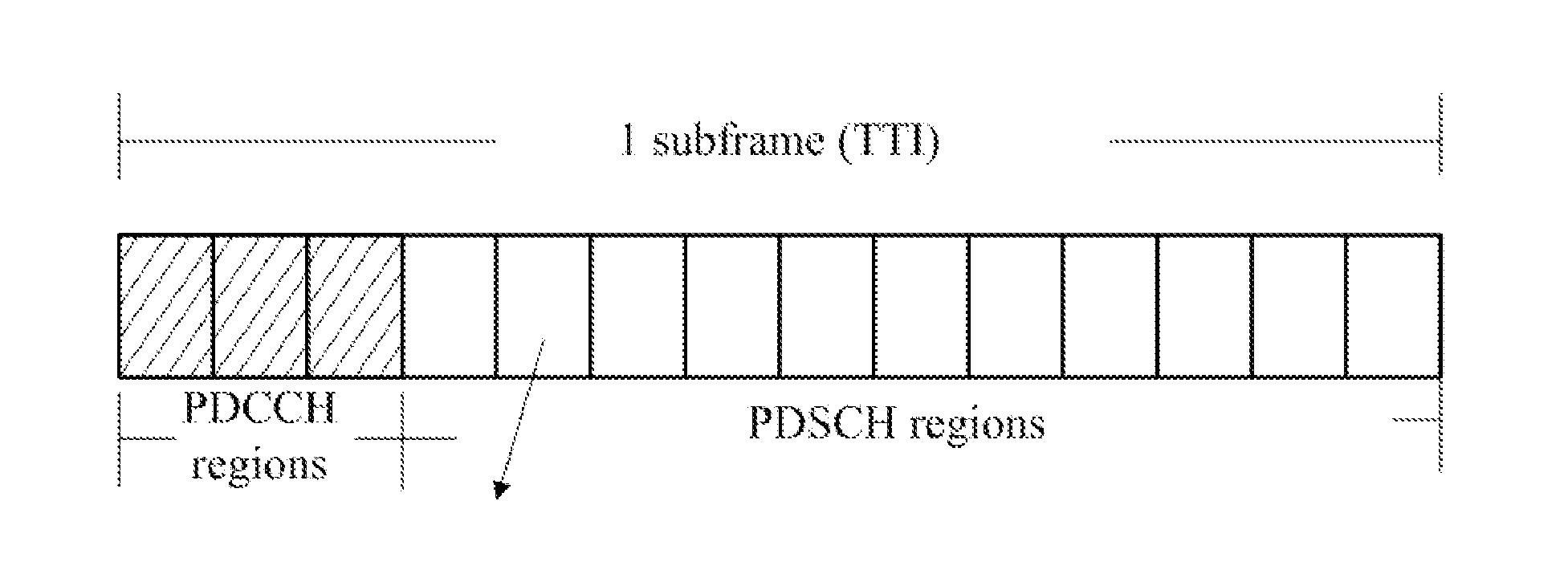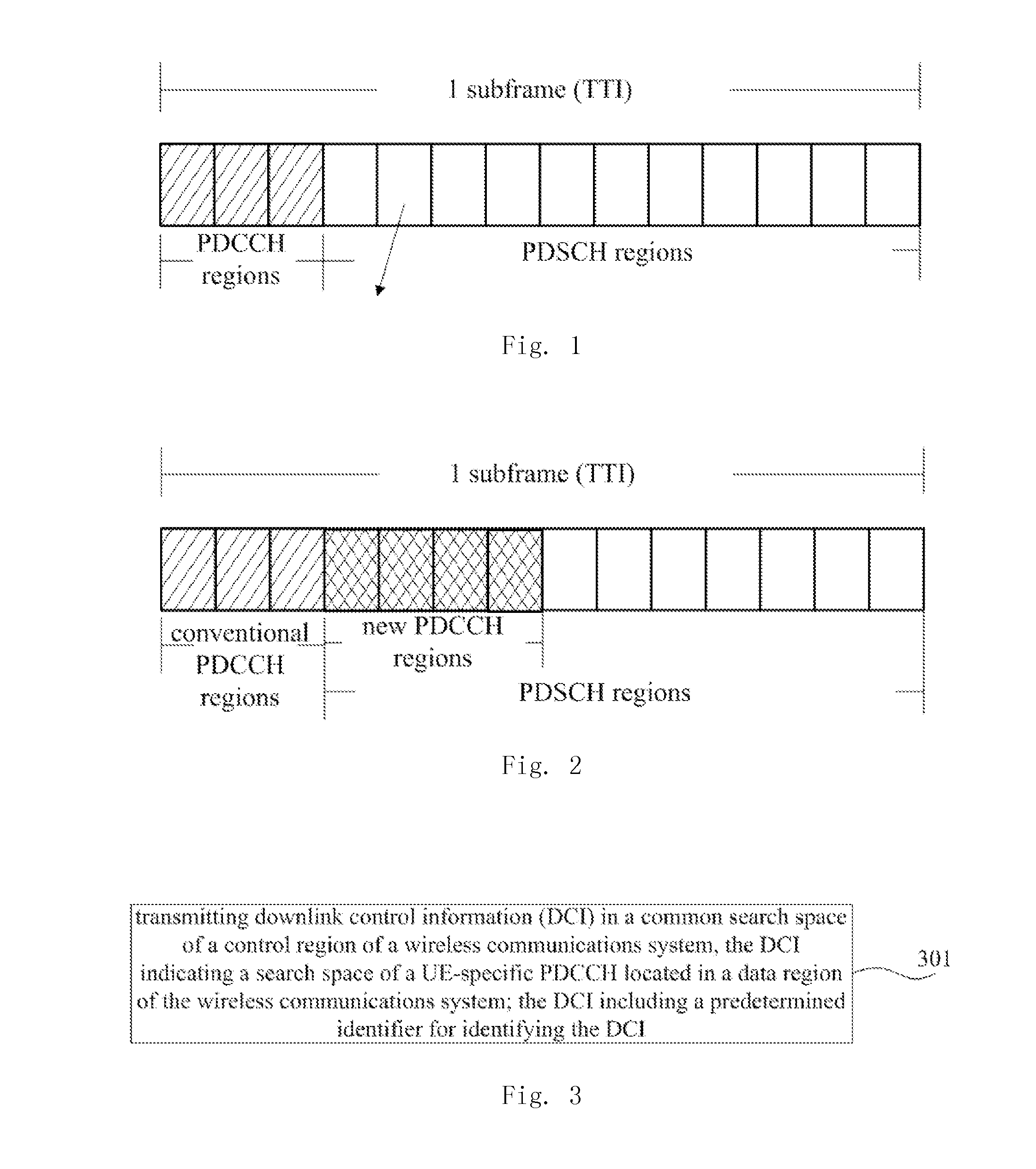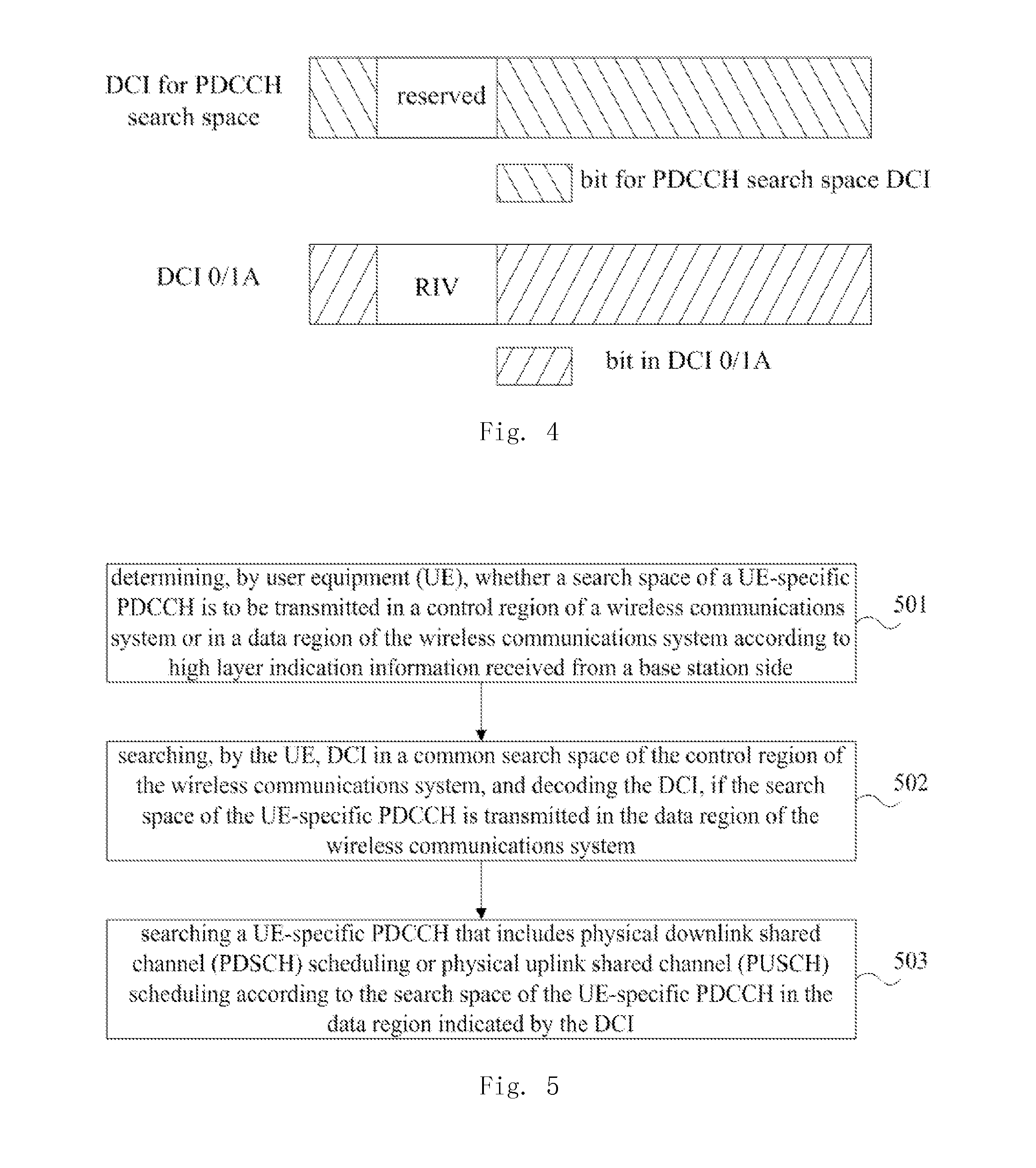Method for transmitting downlink control signaling, method for searching downlink control signaling and apparatus used for the same
a control signal and downlink technology, applied in the field of transmission technology, can solve the problems of urgent problem of ue's new pdcch search space, inability to obtain the same beamforming gain as the pdsch, etc., and achieve the effect of saving signal overhead
- Summary
- Abstract
- Description
- Claims
- Application Information
AI Technical Summary
Benefits of technology
Problems solved by technology
Method used
Image
Examples
embodiment 1
[0043]FIG. 3 is a flowchart of a method for transmitting downlink control signaling of an embodiment of the present invention. Referring to FIG. 3, the method includes:
[0044]step 301: transmitting downlink control information (DCI) in a common search space of a control region of a wireless communications system, the DCI indicating a search space of a UE-specific PDCCH located in a data region of the wireless communications system.
[0045]In step 301, the wireless communications system may be an LTE system, such as an LTE R8 system, or an LTE-A system, such as an LTE-A R-10 system; and it may also be other systems transmitting various DCI via PDCCH, and this embodiment is not limited thereto.
[0046]In step 301, the DCI may further include a predetermined identifier for identifying the DCI. According to the predetermined identifier, the UE may determine whether the DCI transmitted in the control region of the wireless communications system is the newly-defined DCI in the embodiment of th...
embodiment 2
[0059]FIG. 5 is a flowchart of a method for searching downlink control signaling provided by an embodiment of the present invention. Referring to FIG. 5, the method includes:
[0060]step 501: determining, by user equipment (UE), whether a search space of a UE-specific PDCCH is to be transmitted in a control region of a wireless communications system or in a data region of the wireless communications system according to high layer indication information received from a base station side;
[0061]step 502: searching, by the UE, DCI in a common search space of the control region of the wireless communications system, and decoding the DCI, if the search space of the UE-specific PDCCH is transmitted in the data region of the wireless communications system;
[0062]wherein, the UE may judge whether the searched DCI is newly-defined DCI, and if it is newly-defined DCI, the UE may obtain an exact position of the UE-specific PDCCH in the data region indicated by the newly-defined DCI by decoding the...
embodiment 3
[0072]FIG. 7 is a schematic diagram of the structure of a base station provided by an embodiment of the present invention. As shown in FIG. 7, the base station includes:
[0073]a transmitting unit 71 configured to transmit DCI in a common search space of a control region of a wireless communications system, the DCI indicating a search space of a PDCCH located in a data region of the wireless communications system; wherein, the DCI further includes a predetermined identifier for identifying the DCI, so as to be differentiated from existing DCI.
[0074]In an embodiment, the DCI transmitted by the transmitting unit 71 includes only time-frequency resource allocation information located in the search space of the UE-specific PDCCH of the data region.
[0075]In another embodiment, the DCI transmitted by the transmitting unit 71 includes only offset information of the search space.
[0076]In still another embodiment, the DCI transmitted by the transmitting unit 71 includes both the time-frequency...
PUM
 Login to View More
Login to View More Abstract
Description
Claims
Application Information
 Login to View More
Login to View More - R&D
- Intellectual Property
- Life Sciences
- Materials
- Tech Scout
- Unparalleled Data Quality
- Higher Quality Content
- 60% Fewer Hallucinations
Browse by: Latest US Patents, China's latest patents, Technical Efficacy Thesaurus, Application Domain, Technology Topic, Popular Technical Reports.
© 2025 PatSnap. All rights reserved.Legal|Privacy policy|Modern Slavery Act Transparency Statement|Sitemap|About US| Contact US: help@patsnap.com



